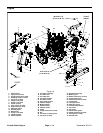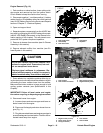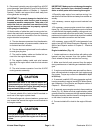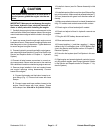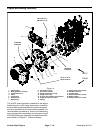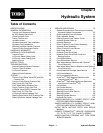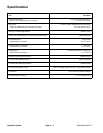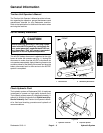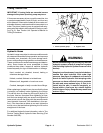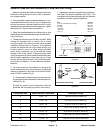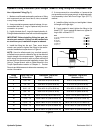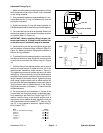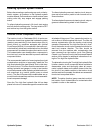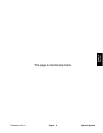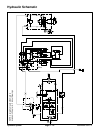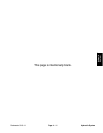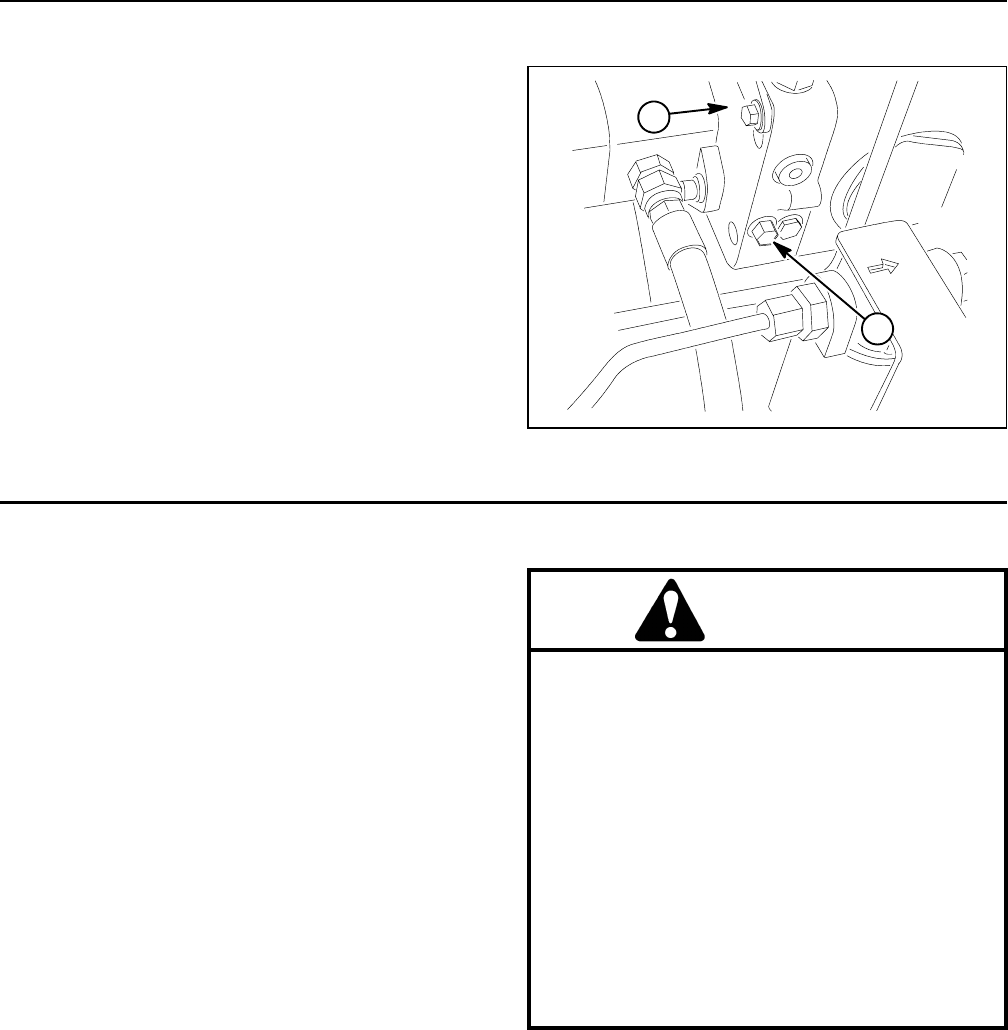
Reelmaster 5010- HHydraulic System Page 4 - 4
Towing Traction Unit
IMPORTANT: If towing limits are exceeded, severe
damage to the piston (traction) pump may occur.
If it becomes necessaryto tow orpush the machine,tow
or pushat a speed below 3 mph(4.8 kph), and for a very
short distance.If the machine needsto be moved acon-
siderable distance, machine should be transported on a
trailer. The piston (traction)pumpisequippedwithaby-
passvalve thatneedsto beloosened fortowing orpush-
ing (Fig. 3). See Traction Unit Operator’s Manual for
Towing Procedures.
1. Piston (traction) pump 2. Bypass valve
Figure 3
2
1
Hydraulic Hoses
Hydraulic hoses are subject to extreme conditions such
as pressure differentials during operation and exposure
to weather, sun, chemicals, very warm storage condi-
tionsor mishandlingduring operationand maintenance.
These conditions can cause hose damage and deterio-
ration. Some hoses are more susceptible to these
conditions than others. Inspect all machine hydraulic
hoses frequently for signs of deterioration or damage:
Hard, cracked, cut, abraded, charred, leaking or
otherwise damaged hose.
Kinked, crushed, flattened or twisted hose.
Blistered, soft, degraded or loose hose cover.
Cracked, damaged or badly corroded hose fittings.
When replacing a hydraulic hose, be sure that the hose
is straight (not twisted) before tightening the fittings.
This can be done by observing the imprint (layline) on
the hose. Use two wrenches when tightening a hose;
hold the hose straight with one wrench and tighten the
hose swivel nut onto the fitting with the second wrench
(see Hydraulic Hose and Tube Installation in this sec-
tion). If the hose has an elbow at one end, tighten the
swivel nut on that end before t ightening the nut on the
straight e nd of the hose.
For additional hydraulic hose information, refer to Toro
Service Training Book, Hydraulic Hose Servicing (Part
Number 94813SL).
WARNING
Before disconnecting or performing any work on
hydraulic system, relieve all pressure in system
(see Relieving Hydraulic System Pressure in this
section).
Keepbodyandhands awayfrompinholeleaksor
nozzles that eject hydraulic fluid under high
pressure. Use paper or cardboard, not hands, to
search for leaks. Hydraulic fluid escaping under
pressure can have sufficient force to penetrate
the skin and cause serious injury. If fluid is in-
jected into the skin, it must be surgical ly re-
moved within a few hours b y a doctor familiar
with thistype ofinjury.Gangrenemay resultfrom
such an injury.



